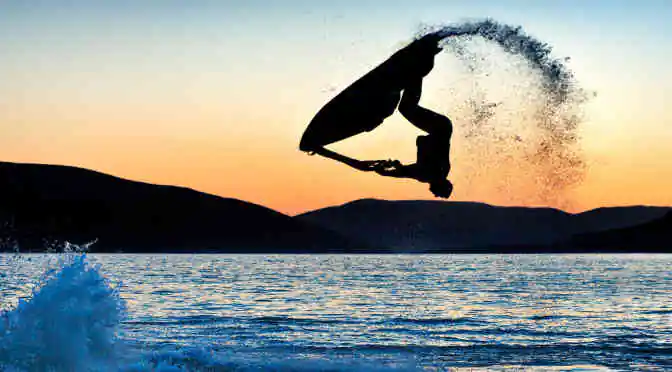Though widely viewed as a recreational activity, jet skiing and jet ski racing is increasingly being considered a serious competitive sport around the world. The upcoming World Beach Games—which were initially planned to debut in San Diego, California, US this year, but have been pushed back to 2019—are currently one of the major factors driving the popularity of jet skis. Some of the events that the Beach Games are said to include are jet ski racing, beach volleyball, skateboarding, and other sports and activities that are traditionally played on (or near) the beach. Both Asia and South America have held their own Beach Games in the past—Asia’s has existed since 2008 and South America’s since 2009—and have included jet ski racing since the events’ inceptions.
Jet ski racing has also become quite a popular sport outside of the Beach Games. P1 AquaX, one of the most popular jet ski competitions in the world, is held annually in the US, the UK, and Malaysia. The competition is segmented into two different categories depending on the type of jet ski (stand up or sit down) and is televised globally. The International Jet Sports Boating Association (IJSBA) also holds a number of competitions throughout the year at various locations, many of them within the United States. The IJSBA World Finals is the longest-running jet ski competition; the 2017 games will celebrate their 36th year running.
The popularity of jet skis is increasing with its traditional consumer base as well. The number of casual and recreational jet ski users is also on the rise as both the cost of jet ski rental and purchase of jet skis and jet skiing equipment becomes more common and affordable. By 2021, the global jet skiing PWC (personal watercraft) market is expected to reach USD 1.44 billion.
Both casual and competitive jet skiing—like most other adventure sports—come with some dangers. A widely publicized example of the risks associated with jet skis occurred in December 2015 when musician DJ Khaled got lost on his jet ski in the middle of the ocean at night, capturing the entire incident on social media in real time. As most jet skis don’t come equipped with lights, Khaled was forced to navigate using his phone’s flashlight to see, telling fans watching via Snapchat, “The key is not to drive your jet ski in the dark. This is against the law” (this is actually not accurate: in Miami, where this occurred, there is no law or by-law against driving a jet ski in the dark). In addition to accessory lights, Khaled also visibly lacked protective equipment recommended for jet skiing, such as protective gloves, a wet suit, or water shoes, and was going at a higher speed than recommended at night for much of his Snapchatted saga.
Khaled arrived home unscathed, but many others are not as lucky. Jet ski accidents are most frequently caused by speed, but another major cause is lack of safety equipment: of the 20% of water sporting participants who die from drowning every year, only 15% of them wear life jackets or other flotation devices. To combat these known dangers, vendors and regulatory bodies are encouraging participants to wear safety equipment consistently. The price of proper safety equipment tends to be high (according to Technavio, the total average cost of a jet ski and the required protective gear can be more than USD 7,000 total), but the increasing popularity of equipment rentals (which come at a much lower cost than ownership does) is making safety more accessible and affordable.
The increase of jet ski racing as a recognized sport will ultimately lead to an increase in sales and rentals of safety equipment and knowledge of safety precautions, as all jet ski racing organizers and regulatory bodies require safety equipment (including a wetsuit, googles, and gloves) to be worn by participants during races. By 2021, the global jet skiing equipment market is expected to reach USD 4.04 billion, with the Americas comprising almost half of the overall market share.
Get a detailed analysis of the Global Jet Skiing Equipment Market



